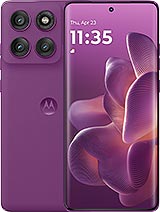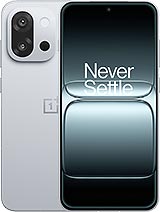Sunday debate: Bigger battery or slimmer phone?
Great design often requires sacrifices. What do you look for in a modern-day smartphone: a sexy, slim profile or some more juice, regardless of a little extra heft and potentially lesser looks? Ro and Victor discuss.

Victor: "With great power comes great responsibility"
"Progress" is quite a fickle term in the mobile realm. It wasn't really that long ago, when the industry collectively was all about minification. Then came the multimedia push and with it bigger panels, innovative form factors to facilitate them and you pretty much know the rest. A lot of hardware concepts died out on the surprisingly short road to today's boring "slab" design. But that's a topic for another discussion altogether.

The one thing to remain constant - always wanting more for less. More screen in a manageable footprint, more computation power from a smaller and less power-hungry chipset. Better shots from a smaller camera. And for the most part, that has been working out so far. The only major roadblock left seems to be the battery.
No real revolutionary advancement have been made over the past few years. At least nowhere near the scale of other component improvements. Therein lies my issue: there's no real way to get more power out of a smaller battery, yet the industry seems adamant that it can and should be sacrificed for the sake of a slimmer or lighter body.
In a trend-driven, cut-throat industry of sameness, that choice is no longer yours to make. I, for one, have never really appreciated having decisions made for me.
First, let me just say, I am aware that fast charging solutions exist and that they are really convenient. In fact, I've mostly given up the pursuit to extend my Samsung Galaxy Note8's real-worlds battery life to two days. And since I don't really want to charge it overnight a quick top-off at the office is my solution.

The strive towards longer periods away from the socket is pretty self-explanatory. So, let me explain the no overnight charging policy and the other, perhaps more important bit of my grudge with small batteries.
I really care about the heath and longevity of my battery-powered devices. Besides wanting to keep them working properly, there are also environmental aspects. The industry has made it clear that removable batteries aren't coming back. Part of accepting that is understanding that the life-cycle of your phone/gadget is pretty much tied to its battery.
I don't want to contribute needlessly to the electronics waste crisis and don't really mind hanging on to a phone for a few years. But once its battery degrades to a certain point, I either have to toss is and hope all of it gets properly recycled (it won't) or open it up, risk damage and any potential waterproofing to install a battery of potential dubious quality. Neither seems like a good choice to me.
But where does the battery capacity come into play here? Well, to keep Lithium-ion cells healthy for as long as possible, you shouldn't let them run down all the way to zero. Neither should you let them sit charged to the brim for prolonged periods of time. Adhering to a 50% to 80% charge level scheme would be ideal, but not really practical. So, I tend to strive for 30% - 100%, with no wasteful lingering on the charger. That's why charging overnight is a no go and even though I could stretch my battery to two days, I usually choose not to. Having a bigger battery greatly aids in this admittedly weird endeavor of mine.

But, even if you don't see my point, there is always the piece of mind and convenience arguments to be made for a bigger battery pack. It just seems to me the industry has collectively chosen to forget a time when weekly charging was easily achievable. And while the current arrangement is OK for most users, I'm sure that many, me included, wouldn't mind a few mm of extra girth on their devices for an alternative approach to things. Frankly, the lack of choice is the disturbing part.

Ro: "Fast charging to the rescue!"
If we were discussing this three or four years ago, I would definitely tell you that thicker phones with bigger batteries are better. But things have changed since.
First, the battery density has increased significantly and now every mid-range device carries at least 3,000 mAh of charge, which should get you through the day, power user or not.
Secondly, semiconductor technology has reached new heights. A few years back, devices used chips based on the 28nm manufacturing process whereas now, TSMC is ramping up production of its 7nm technology due to the increasing demand. This is a four times less space between transistors that accounts for a smaller die size, increase in performance per watt and more importantly, offers immense power savings.

So now OEMs can get away with a slightly smaller battery crammed inside a tinier, thinner and more comfortable to hold chassis while getting pretty much the same battery runtimes compared to a 2014 or 2015 flagship. And let's not forget the memory improvements - the latest LPDDR4X memory and UFS 3.0 (Universal Flash Storage) draw less power than their counterparts of yesteryear.
In addition, the shift to the AMOLED screens lately has also affected battery life in a positive way along with the numerous software tweaks and optimizations Google and Apple try to implement to save on power. But probably the most impactful innovation in this regard is fast charging.
 Samsung Galaxy S9+'s Super AMOLED display
Samsung Galaxy S9+'s Super AMOLED display
All modern Qualcomm and MediaTek chipsets have some form of fast charging and OEMs like Oppo/OnePlus and Huawei, Motorola have adopted rapid charging technologies of their own. So chances are you have a Quick Charge 3.0 or even Quick Charge 4.0+ compatible smartphone. As long as it's from 2017 or 2018, of course.
Anyway, with the slew of fast charging technologies, there's no need to put your device on overnight charging anymore because it doesn't require several hours to fill up your battery. Just plug it in in the morning while you shower, make breakfast, brush your teeth or just get one of the compatible car chargers on your way to work. In less than 30 minutes of charging, your device will be ready to take on a full day away from the plug.
 OnePlus 3T and its iconic Dash Charger
OnePlus 3T and its iconic Dash Charger
I for once, use a fairly old device - just turned two years - and, of course, the battery has degraded substantially, but my charging habits have remained mostly the same - I just plug it in whenever I have the chance. Sure, I do miss the two days period of cable-free usage sometimes, but the quick charging feature compensates for that.
 Huawei P20 Pro and its fast charger included in the box
Huawei P20 Pro and its fast charger included in the box
In any case, I can't argue with the fact that some people work outdoors or just spend their time away from the comfort of their homes or office and big batteries are preferable to the razor-thin, fragile glass sandwiches nowadays.
And as Victor pointed out, if the industry didn't kill the convenient removable battery, we wouldn't have to be here debating and everyone would just carry a spare one in their pocket. A quick reboot and you have a freshly-charged 3,000 mAh battery at your disposal.
So which side are you on? Cast your votes below.
Related
Reader comments
- Therockfordfiles
- 22 Mar 2021
- fu%
Samsung Galaxy m12 packs a 6000 mAh battery and the s21 packs a 5000 mAh battery. As you can see, they're giving more battery capacity than Xiaomi and Huawei
- Therockfordfiles
- 07 Mar 2021
- fu%
My refurbished note 9 has a massive 4100 mah battery and could last for days especially since the android 10 upgrade. Software also plays a big role in battery degradation
- Therockfordfiles
- 07 Mar 2021
- fu%
Not if u try to use a regular old charger than the fast charger. Let's be honest, without a fast charger, my galaxy a12 takes 3 hours to be fully charged, that's pretty good knowing that my old grand prime plus could take an eternity to...








 Motorola
Motorola Samsung
Samsung OnePlus
OnePlus Honor
Honor Samsung
Samsung


